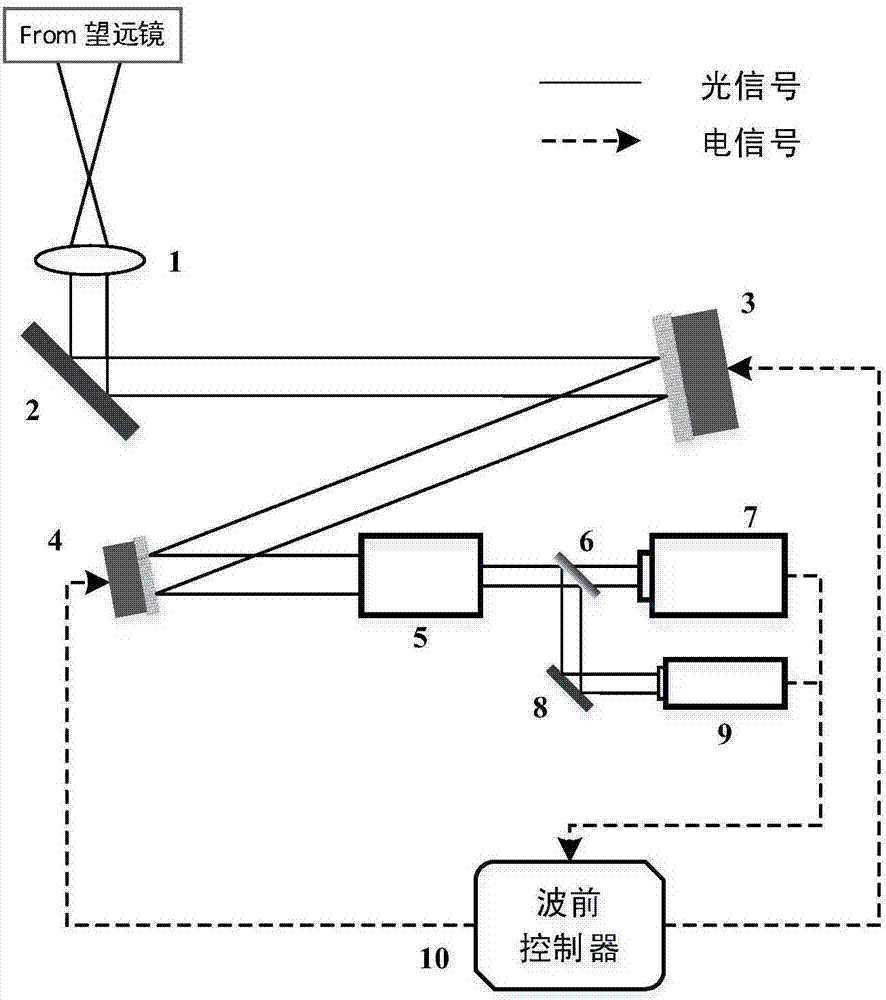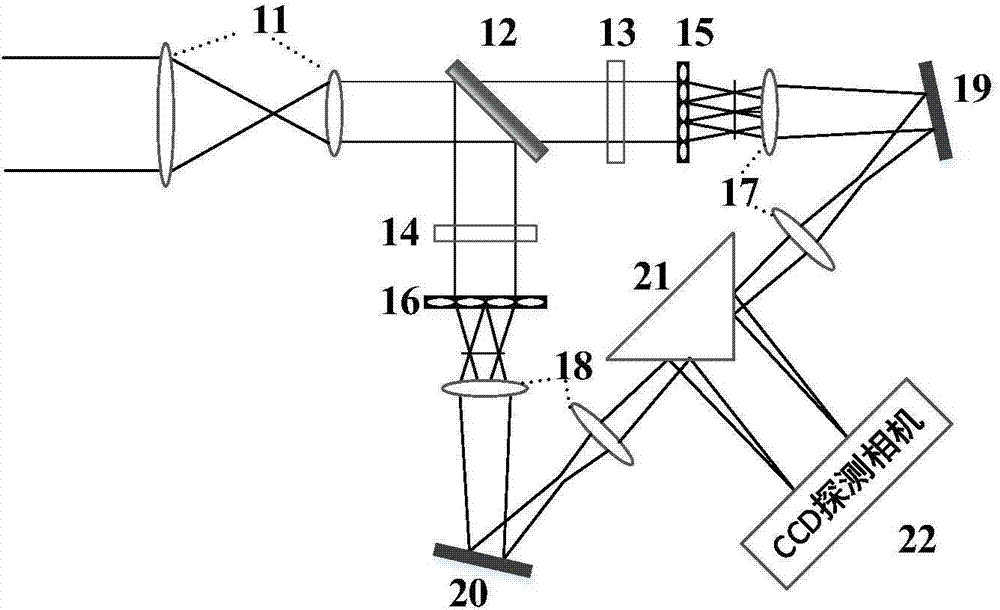Solar adaptive optical system based on composite Shack-Hartmann wave-front sensor
A technology of adaptive optics and wavefront sensors, applied in optics, optical components, instruments, etc., can solve the problem of limited spatial sampling rate of adaptive optics system, and achieve the effect of expanding the scope of application
- Summary
- Abstract
- Description
- Claims
- Application Information
AI Technical Summary
Problems solved by technology
Method used
Image
Examples
Embodiment Construction
[0016] The present invention will be further described below in conjunction with the accompanying drawings and specific embodiments.
[0017] Such as figure 1 As shown, the present invention includes a collimating mirror 1, a first reflecting mirror 2, an oblique wavefront corrector 3, a high-order wavefront corrector 4, an optical matching mirror 5, a beam splitter 6, and a composite Shaker-Hartmann wavefront sensor 7. The second mirror 8 , the fine tracking wavefront sensor 9 and the wavefront controller 10 . The collimating mirror 1 collimates the light coming from the telescope into a suitable aperture, and ensures that the high-order wavefront corrector 4 is located at the conjugate position of the pupil plane; the collimated light is reflected by the first mirror 2 to the inclined wavefront corrector 3 After being combined with the high-order wavefront corrector 4, the beam is shrunk by the optical matching mirror 5 to meet the requirements of the back-end optical syste...
PUM
 Login to View More
Login to View More Abstract
Description
Claims
Application Information
 Login to View More
Login to View More - R&D
- Intellectual Property
- Life Sciences
- Materials
- Tech Scout
- Unparalleled Data Quality
- Higher Quality Content
- 60% Fewer Hallucinations
Browse by: Latest US Patents, China's latest patents, Technical Efficacy Thesaurus, Application Domain, Technology Topic, Popular Technical Reports.
© 2025 PatSnap. All rights reserved.Legal|Privacy policy|Modern Slavery Act Transparency Statement|Sitemap|About US| Contact US: help@patsnap.com


